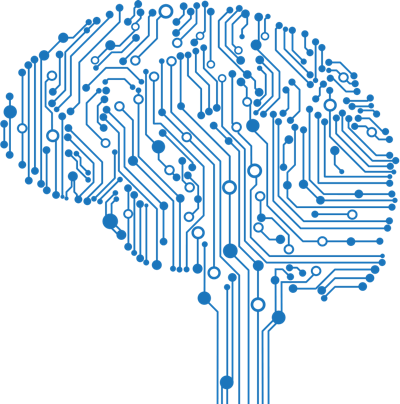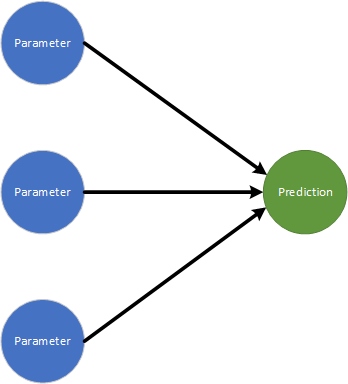
Use Machine Learning to Disrupt your Competition
Machine Learning Can Help You Take Disruptive Actions
Disrupting Through Data:
- Gather the data
- Gain knowledge from your data
- Test proposed actions against your knowledge
- Take Action based on your knowledge


Data is The New Bacon
I saw this T-Shirt at a conference. I remember looking at it and thinking to myself, “It sure is.” Everything is about the data. My company has all the data of all the things it has ever done ever. There is only one real fly in the ointment. It takes more than collecting the data to use the data. To disrupt, knowledge has to be gained from the data. Then and only then can you take actions that will disrupt. Machine learning is a tool that can help you gain that knowledge and move along the path to disruption.
 Knowledge is All About Pattern Recognition
Knowledge is All About Pattern Recognition
Humans are very good at recognizing patterns from minimal information. Evolution has favored the person that can quickly recognize the difference between a warm fuzzy animal and a warm fuzzy animal that will kill you and eat you. The same holds true for a business. Evolution, favors the business that can quickly recognize patterns (gain knowledge from their data) and quickly react to them (take action). Ultimately a business that can ask and predict reliably in an “If this, then that” way, is a business that has a competitive advantage and is poised to disrupt the marketplace.

Gaining the Knowledge
If this, then that. Almost anything in business can be broken into that very simple format.
- If a customer bought a cake mix and milk, then they will likely buy eggs.
- If sales increase for 3 consecutive months, the fourth month will suffer a dip.
- If the price of aluminum drops buy 15 % there will be a shortage of aluminum in the next quarter
Traditionally, data analysts pour over a companies data and look for trends. The knowledge of their data allows them to propose new scenarios and to make predictions about what the outcomes will be. The trends and predictions can help to identify what actions they should take. (i.e. If we were to stockpile more aluminium when it drops in price by 10% do we avoid the prices during the shortage?)

What is Machine Learning?
Machine learning is really not much different than a data analyst surveying the data and looking for trends. The primary differences are how the knowledge is gained and the scale that the machine can process. In machine learning, the machine will ingest the data in a training phase, test against data with known results in a testing phase and then use its model to predict what the new proposition would result in. The benefit to machine learning is that it can uncover hidden rules that humans may have missed.
 Hidden Rules => Disruption Actions
Hidden Rules => Disruption Actions
Hidden rules are the trends or rules that humans cannot easily see. While humans are great at recognizing trends and pattern, we do have a limited capacity for conceptualizing data. If the source data is too broad in scope (too many parameters), too large in volume (too many records), or too disparate in detail humans will struggle. Machines have the ability to handle hundreds even thousands of separate data points and entire databases of data. Furthermore, computers can run every permutation of the data finding correlations that just weren’t apparent. These hidden correlations are where disruption lies. Machine learning can help uncover them.

A Disruptive Clinic
The Problem
Imagine a healthcare agency that has a 40% appointment “no-show” rate. This is bad for the patients, and bad for the clinic. A human looking at the data may be able to suss out that male patients are more are more likely to “no-show” an appointment, but what actionable knowledge does that provide? Can the clinic really adopt a “Treat men differently” policy? Probably not.
What was found
With machine learning the clinic is able to look at multiple parameters about not only the particular appointment but about the patient, about the illness, about the dates that were used. Internal hidden rules can show correlations that were previously unknown (ex. Men with government supplied healthcare that schedule follow up appointments more than 30 days out are 80% more likely to no-show). Now the clinic has some information that they can take action on.
A Word About Difficulty
I am not going to try and paint a all happy rainbows and unicorns solution here. Machine learning is a specific subset of data science and of programming. That being said, there are many libraries out there that make it fairly accessible to any programmer worth their salt and there are cloud services out their that allow more data-centric folks to work in a more drag and drop style. My native stack is .Net and I was able to write a machine learning program that could predict the family a particular variation of Iris belongs to in less than an hour. (Iris sorting is apparently the “Hello World” of the ML space)
In conclusion, I would posit that most of you work at companies that have been stockpiling their data for years only to leave it waste away on some forgotten server in the back room. Machine learning can help you gain knowledge of your data so that you can take actions that will disrupt the market space.
Machine learning can help you gain knowledge of your data in a better way allowing you to predict how different actions can help or hurt your company.~Tal McMahon


